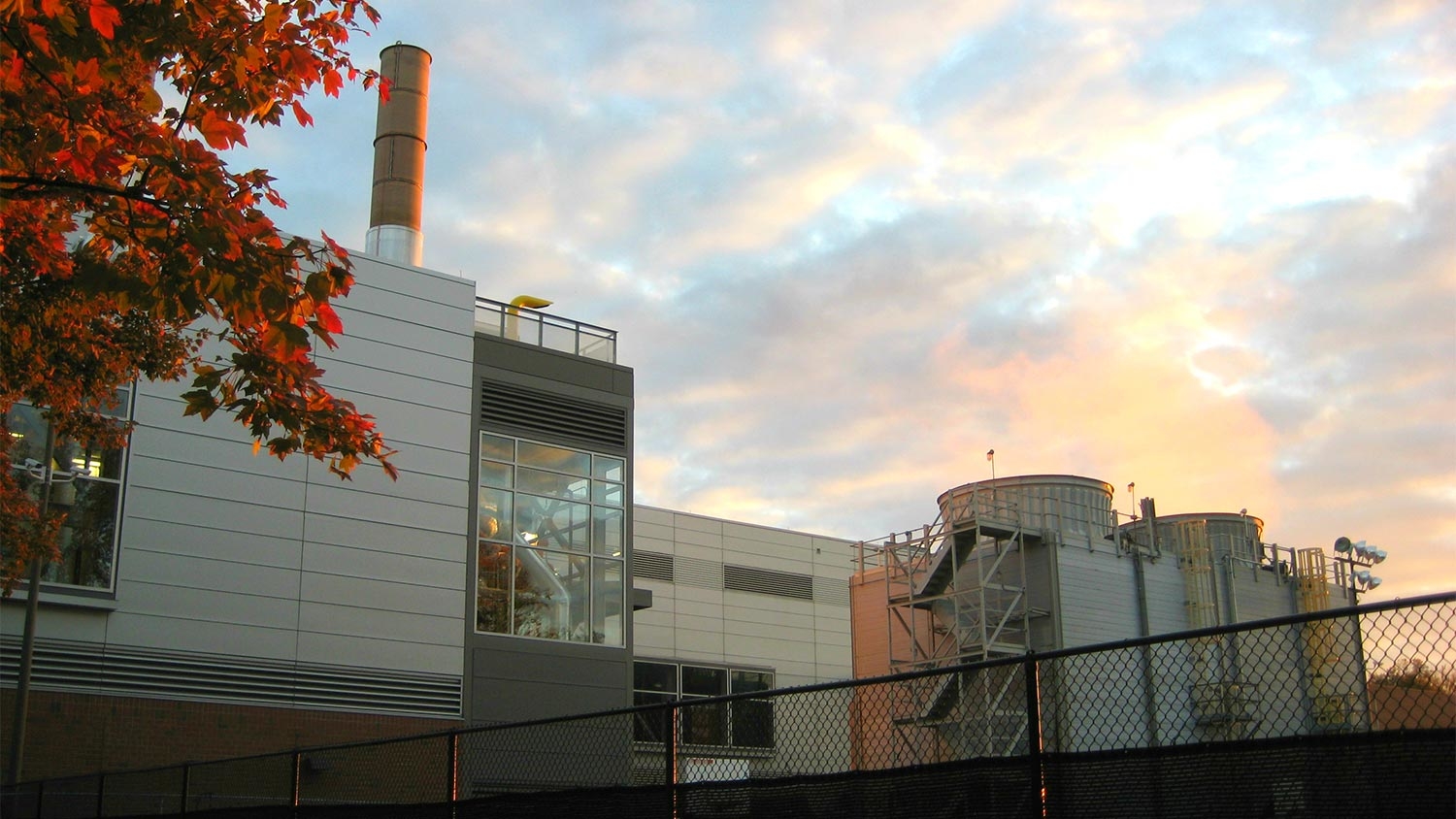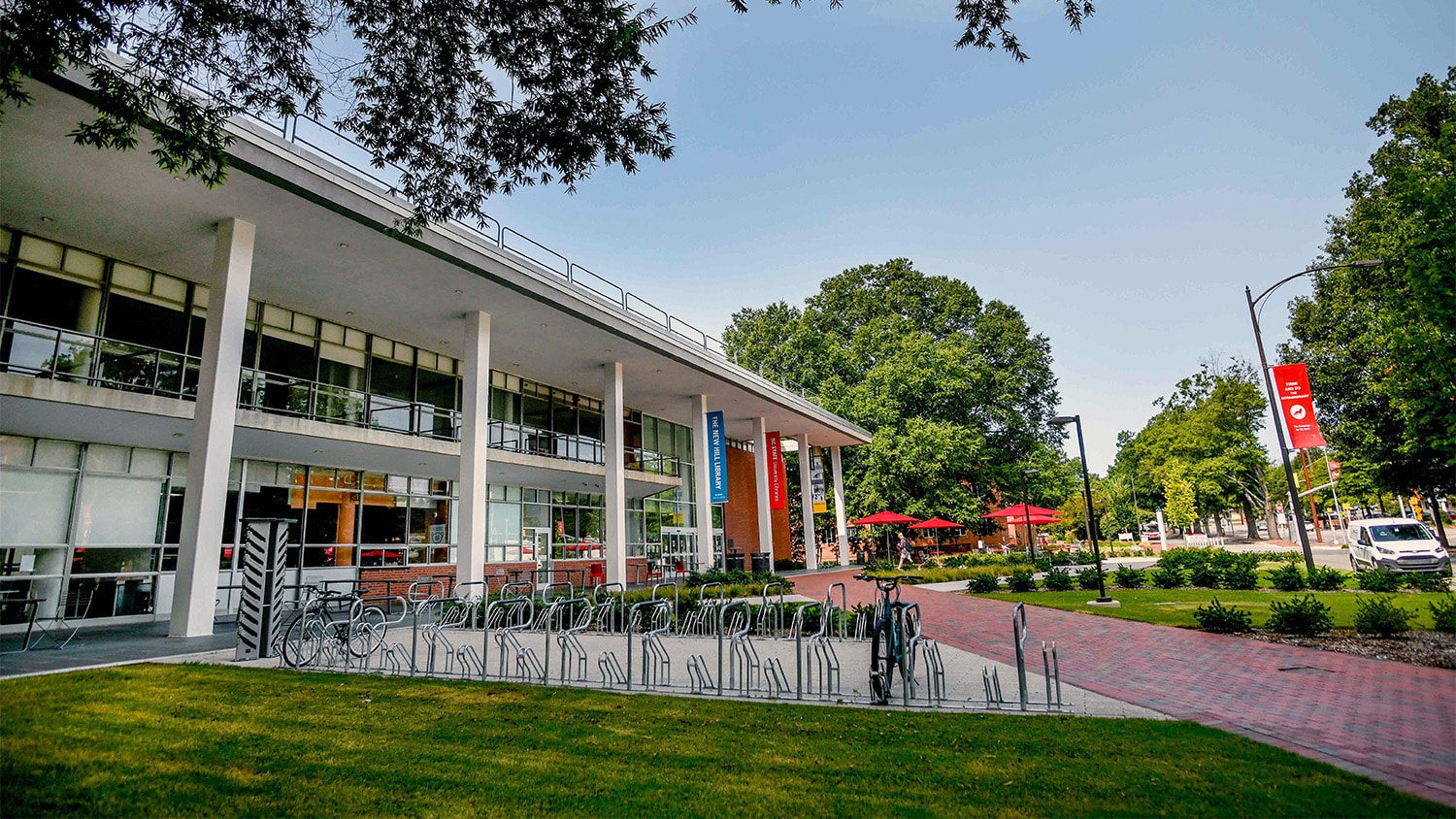Campus energy and water management efforts continue to provide important fiscal and environmental benefits, according to NC State’s 2017 Strategic Energy and Water Report. Published in December, the report highlights the university’s efforts to reduce utility use and cost during the 2016-2017 fiscal year.
“Energy and water are among NC State’s most necessary and costly expenses,” said Erik Hall, NC State’s Director of Energy Management. “By actively managing and reducing our energy and water use, the university conserves vital fiscal and natural resources.”
Guided by a Strategic Energy Management Plan, NC State’s Energy Management office tracks utility data, coordinates projects that improve efficiency, deploys technology that reduces utility consumption and annually reports progress toward goals.
Energy
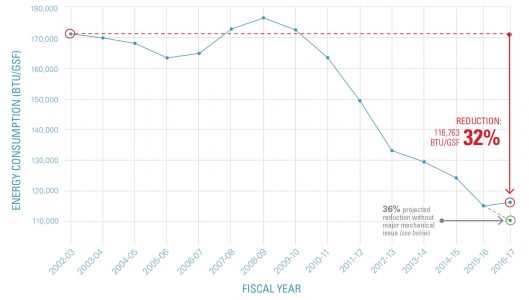
During the 2016-2017 fiscal year, campus energy use per gross square foot declined 32 percent from the baseline fiscal year of 2002-2003. That’s a slight increase from the previous year due to mechanical maintenance and repairs at the Cates Utility Plant, where combined heat and power technology is the single largest contributor to campus energy efficiency.
At Cates Utility Plant, NC State generates electricity on-site. Waste heat from the plant is recovered and converted to steam, which is then used as an energy source for heating in campus buildings. In 2017, the system experienced reduced operations due to mechanical issues and lengthy planned maintenance.
“That caused the plant to generate 8.5 percent less electricity, which decreased the efficiency of our heat generation and increased our overall energy use,” Hall said. “Had the plant operated at its normal capacity, we estimate overall campus energy use would have declined to approximately 36 percent from the baseline year, a 3 percent reduction from 2016.”
Per gross square foot, both energy consumption and utility costs have shown downward trends since 2009. Energy and water efficiency gains, coupled with low natural gas prices and Energy Management’s strategic purchasing of natural gas, have contributed to a gradual reduction in utility cost intensity.
Water
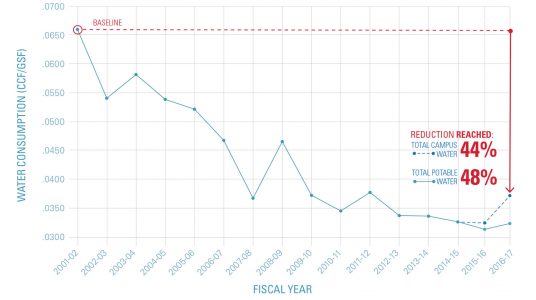
Total campus water use per gross square foot was 44 percent below the baseline fiscal year of 2001-2002. That’s a slight increase from the 2015-2016 fiscal year when NC State began using reuse water supplied by the City of Raleigh.
Reuse water ‒ sometimes called reclaimed water or non-potable water ‒ is wastewater treated to a high standard and reused instead of being discharged into a waterway. On Centennial Campus, reuse water is used for irrigation, toilet flushing in Hunt Library and in cooling towers at the Centennial Campus Utility Plant.
“Because reuse water has a higher concentration of impurities than potable water, the cooling tower basins must be more frequently drained. That increases water use,” Hall said. “However, the benefits of reuse water ‒ primarily decreased cost and drought resistance ‒ outweigh the additional water use.”
What’s Next
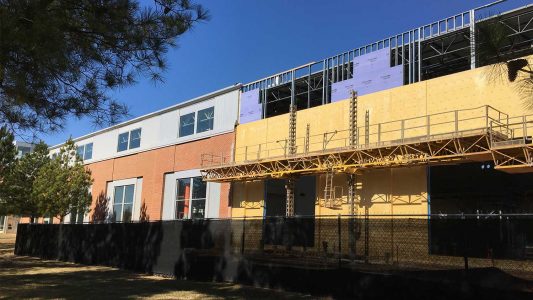
In 2017, NC State launched two major energy projects that will reduce future energy costs on Centennial Campus. New thermal energy storage at the Centennial Campus Utility Plant will enable energy ‒ in the form of chilled water ‒ to be created when electricity is cheapest and stored for use when electricity is most expensive.
At the same facility, the university is installing 6.5 megawatts of combined heat and power technology, which enables energy generation on campus. By recovering waste heat and converting it to steam, Hall said the system’s efficiency increases to 40 percent as opposed to 20 percent in a conventional plant.
The project is expected to generate nearly $1.6 million in annual savings and is funded through an energy performance contract, which allows the university to pay for significant efficiency improvements with future savings. This energy performance contract is NC State’s fourth and brings the total utility costs avoided by energy performance contracts to almost $10 million each year.
“These vital projects not only reduce our energy and water consumption, they also provide for necessary building and system improvements,” said Hall.
Additionally, smart building technologies for energy efficiency are being incorporated into two major campus buildings in design: Engineering Building Oval and Plant Sciences Building.
The full Energy and Water Report is available online.
This post was originally published in Sustainability News.
- Categories:
